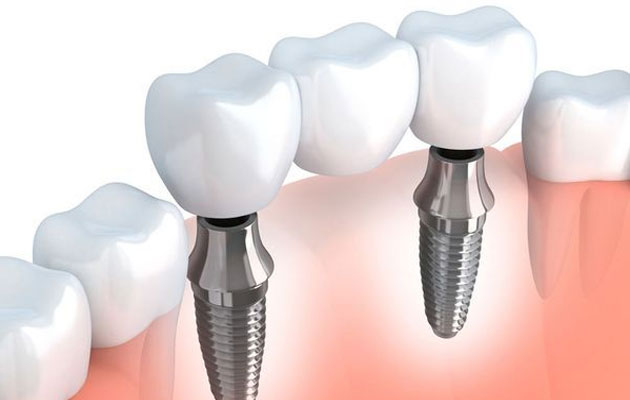An increasingly popular way to restore the missing teeth is through dental implants. These are used as an alternative to dentures and bridges. Why? Because they have many advantages, including their completely natural appearance, their convenience and their ability to maintain bone mass – a quality that makes additional tooth loss far less likely.
Dental implants are the best treatment option to replace a missing tooth or multiple teeth when there is an adequate bone density. If a patient does not have enough bone density, then bone grafting surgery may be required to correct any deficiency.
A dental implant is a titanium screw that is surgically inserted into the jaw bone to serve as the tooth root. After several months, the implant naturally attaches to the bone so that it looks and acts just like a natural tooth.
The Procedure
A dental implant treatment involves many steps.
In the first instance, a patient will need to be evaluated to ensure that the surrounding gum is healthy and that there is enough bone density available to secure an implant.
To create the tooth replacement, an impression will be taken to provide the necessary mould for a customised implant.
When the implant is ready for insertion, the dentist will cut the gum at the insertion site to expose the bone. The implant will be inserted and the gums around the implant will be stitched to close the incision. Once the implant is firmly embedded into the bone, a post will be attached to the bone and then the dentist will create a permanent tooth replacement.
Over time, the dental implant will fuse with the surrounding bone, acting much like the root of a natural tooth.

